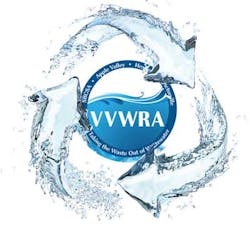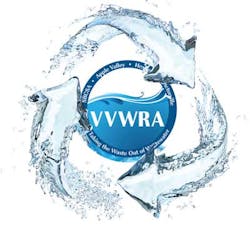Value of Reuse: Selling the Public on Non-Potable Water Reuse Projects
By William Atkinson
The technology required for non-potable water reuse projects is easily available and not extremely challenging; as such, technologically-related problems are usually not the reasons such projects fail. Most commonly, it's the inability of water districts to successfully "sell" the concept to the public, which includes the citizens of the community, potential customers, the local media, and other stakeholders. However, there are ways to effectively promote the idea that the public will not only tacitly accept but will actively support.
"If someone proposes a project that looks like 'toilet to tap,' the press is probably going to react negatively, as will other groups," said Robert Bastien, a senior environmental scientist with the Environmental Protection Agency's (EPA) Office of Wastewater Management (Washington, D.C.). However, according to Bastien, as technologies advance and prove their reliabilities, and as people realize what is occurring with existing source-water shortages, the acceptance tends to increase.
According to Jeff Mosher, executive director of the National Water Research Institute (Fountain Valley, Calif.), non-potable water reuse projects can gain public acceptance easily in some circumstances. Legislation is one method. "For example, Las Vegas has an ordinance that golf courses must use recycled water," he said. The public has accepted this. Cost is another incentive. "Refineries may find that it is difficult or expensive to retrieve potable water, so they will support the use of non-potable recycled water," Mosher said.
"However, projects can fail if they are branded negatively by the public, either as a result of environmental concerns or cost concerns," he said. Aside from managing public relations issues concerning the cleanliness of the water, building purple pipe systems can also be expensive; therefore, water districts should explain why they are worth the investment.
As Mosher sees it, water districts should also demonstrate how their communities are losing water and how reuse projects are expected to improve the situation. "Then, find a large anchor customer, one who is willing to take the reused water year-round," he said. "If you can do these two things, you can probably make your case. People in the community will likely get behind the project."
Las Virgenes Municipal Water District (LVMWD; Calabasas, Calif.) is located in a semi-arid region in Los Angeles County - an area that has historically relied on imported water. "Since we are entirely dependent on water imported from northern California, every drop of water that we are able to recycle is water that doesn't have to be imported," said Jeff Reinhardt, public affairs and communications manager.
Carlos G. Reyes, P.E., director of resource conservation and public outreach, added, "We also live in an area that is very ecologically sensitive, which has driven us to recycle as much water as we can from our wastewater treatment plant.
In fact, about 20 percent of all the water the district sells to the public is recycled water. The majority of this is used for irrigation, such as greenbelts, golf courses, parks, cemeteries, schoolyards, and common areas for multi-family residences. The remainder is used for internal use, such as flushing toilets.
But how did LVMWD sell the idea to the public?
According to Reyes, "One way we promoted the idea was to set a good example ourselves, so we used recycled water to flush toilets in our own buildings. In fact, all of our facilities have signs telling the public that we are using recycled water for toilets. People see this when they take tours or when we host public events."
LVMWD also priced the recycled water below the price for potable water. "As a result, many customers, including the commercial properties, parks and school grounds, welcomed it," said Reinhardt.
Finally, the technology is very LEED-friendly. "Recently, we honored a relatively new entity in our community, the Conrad N. Hilton Foundation, which chose to construct a LEED-Platinum headquarters for its foundation," said Reinhardt. "The building uses recycled water for toilet flushing as well as in its HVAC system for heating and cooling."
In the future, LVMWD hopes to construct a recycled water storage reservoir, which will allow some of the off-peak surplus to be used when demand is at its highest.
The Victor Valley Wastewater Reclamation Authority (VVWRA; Hesperia, Calif.) serves two communities in the Mojave Desert areas of Hesperia and Apple Valley, Calif. Groundwater supplies have continued to diminish over the years as population growth has increased significantly, leading to a situation in which customers consume more water than is replenished by nature.
While the need for a non-potable water reuse project was apparent to VVWRA, management made it a priority to seek public support. "A lot of utilities do not understand the importance of conveying public information," said Logan Olds, general manager. "For example, when you talk about recycled water, most people initially assume you are talking about contaminated water."
Ryan Orr, public information officer, added, "Our goal was to address issues and concerns years before we presented the final details to our board and the two town councils so that people didn't think we were trying to sneak anything past them."
As Olds sees it, the most important aspect of ensuring the success of the project was hiring a public information officer - someone who not only understood public relations but was also familiar with the communities and their citizens.
"We started the outreach effort almost five years ago with a focus group, which included a broad cross-section of stakeholders," said Orr. "By gathering information from this group, we were able to better craft our message to the two communities."
Olds attended each focus group meeting and he considers them to be instrumental in the success of the project. "The meetings allowed us to hear firsthand how much they understood or did not understand, and we considered this as we were moving forward with the planning and design of the facility and how we tailored the message to each of the communities," he said.
For example, during the meetings, VVWRA learned something surprising. "The information each community initially had about water was very different," said Orr. "By becoming aware of this, we were subsequently able to tailor our messages to be different for each community."
Once VVWRA crafted its targeted message to each community, it sent out mailers. It also scheduled community open houses (an elementary school in Hesperia and a town hall in Apple Valley). "We had the general manager, myself, an attorney, an engineer, and other experts in attendance," said Orr. "We answered everyone's questions." For example, if there was an engineering question, it was directed to the engineer. If there was a public information question, it was presented to Orr.
Orr also traveled door-to-door. Likewise, Olds visited every community group that VVWRA could find, including Rotary, Kiwanis and Chamber of Commerce. "We then led tours of a facility that was already operational in Corona, a nearby community, so people could see similar technology in use, with beautiful homes nearby," said Orr. "We also worked closely with the media, which ended up writing some very positive articles on the project."
Every time someone from VVWRA interacted with members of the two communities who supported the project, they would ask them to sign support cards; this was vitally important. "If someone is opposed to something, they will show up to meetings," said Olds. "If they support it, though, they probably won't, so this is what we did when we went door-to-door." (See Fig. 1.)
A final consideration: According to Orr, if you think you have found all of the groups or individuals who are against your project, you probably haven't. "We thought we had identified everyone," he said. "However, at the 11th hour, one of them showed up, and we had to address all of those issues."
"You will almost always find a minority of people who are adamantly opposed to these projects," said Mosher. He cited a case in one California community (served by a different water authority) that wanted to incorporate a non-potable water reuse project. The water district scheduled a public meeting but only one person arrived to express opposition. To the water district, this meant it had a "green light" to proceed. "However, it turned out that this person was dead set against it and formed a group and a rather sophisticated campaign to oppose the project," he said. As a result, the water district postponed the project for two years and was forced to limit the applications, including irrigation of a playground. "They ended up having to install artificial surfaces on the playground instead of irrigating it with reclaimed water," he said.
The water district learned an important lesson about considering everyone's concerns, regardless of how inconsequential they may initially seem.
About the Author: William Atkinson is a correspondent for WaterWorld Magazine. He has been a full-time freelance business magazine writer since 1976, specializing in infrastructure, sustainability, supply chain, risk management, and safety/health.


